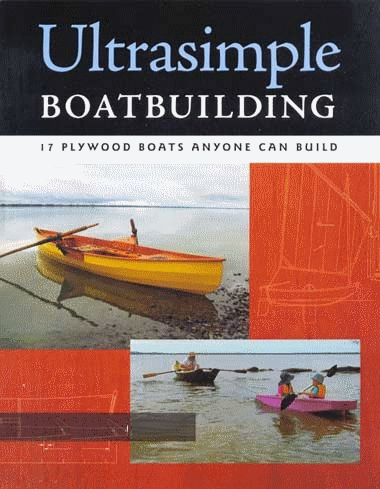Of my published designs, two of the most popular (Phoenix III and First Mate) make use of a sprit rig with a small jib set flying. You can read some of my comments about the rig in this post from May 2012.
Despite the simplicity and effectiveness of this rig, I receive a large number of enquiries about the details of setting and reefing, and it appears to me that many people are unsure of how to benefit from its virtues. This is a real pity, because the sprit rig can set a very large sail area from a very short mast, and is a rig which is ideally suited to small boat cruising. In addition, if set properly, it is a good sail for windward work.
For me, one of the great joys associated with small craft is experimentation with rig variations, and learning how to make rigs which use an absolute minimum of store-bought fittings. There are plenty of old books about traditional seamanship around, and time spent learning is a good investment.
Below is an except from Phil Bolgers book, 100 Small Boat Rigs (Copyright 1984 International Marine Publishing ISBN 0-87742-182-X)

Read More..
 |
| Phoenix III showing-off her sprit rig and flying jib |
 |
| Phoenix III tacking away from a Pooduck Skiff in a battle to get up-wind |
Below is an except from Phil Bolgers book, 100 Small Boat Rigs (Copyright 1984 International Marine Publishing ISBN 0-87742-182-X)
Back to the 17th century. What Ive said about spritsails in Rig 23 applies. By adding a jib to the basic boomless spritsail, some extra area is added in an efficient form, without any multiplication or lengthening of the few short spars. The jib is a good airfoil in its own right, and the draft off it improves the drive of the mainsail. The position of the jib is perfect for a leading-edge device. The spritsail is prone to twist on account of the difficulty of keeping the peak up tight. But the jib compensates for the twist to some extent. Taking the jib off doesnt affect the balance of the rig as much as might be thought. If its sheeted correctly, 10 or 12 degrees out from the centerline, the pull of the sheet tends to swing the bow into the wind. The forward position of the sail has a surprisingly small tendency to knock her bow off the wind. By the same token, if you want to make a boat weathercock downwind, as in a broken-down powerboat that wont steer if she gets broadside to the wind, a loose-footed staysail is not the best sail to make her do it.
This is one of the few sloop rigs that can be weatherly without backstays or standing rigging of any sort. The spritsails mast is so short that it can be built very stiff without its weight overpowering the boat. With the sloop rig the mast is stepped farther aft than in a cat, so the weight of a heavy mast does still less harm.
Moreover, the head of a spritsail is in tension, even when it isnt set up as hard as it should be, and that holds the masthead. The peak halyard of a gaff sail has the same effect, but its not as powerful because theres less trouble keeping a gaff sail properly peaked: the angle of the halyard to the top of the taller mast of the gaff sail works at a better mechanical advantage. The halyard is also slipping on a sheave, with the vector of its force dividing the angle of the standing part and the fall, while the throat of a spritsail can be lashed, or even shackled, solidly in place.
Of course any cantilevered mast has some give. A big boat with this rig would need something by way of a backstay to get the most drive out of the close-hauled jib. In the 15-footer cartooned, with a 13 1/2-foot mast and sprit, and a jib of 18 square feet, the backstay isnt crucial. The rig is auxiliary to the oars, and since it is a spritsail, the spars can not only be stowed in the boat, but stowed out to the sides to be out of the way of the oarsmen. This is the most powerful and weatherly rig that can meet that specification. The fact that its a cheap rig, easily built, strong and reliable, easy to maintain, and readily repaired with makeshift material, is an incidental bonus.
For those of you who would like to learn more about the rigging and versatility of a spritsail, there are three exceptionally good illustrated articles available in back issues of Woodenboat Magazine #89 and #165. The magazines are available as instant digital downloads for only a few dollars each, and I recommend them to you. Here are links to both issues: -
http://www.woodenboatstore.com/product/WoodenBoat_magazine_Issue_89_DIGITAL
http://www.woodenboatstore.com/product/WoodenBoat_magazine_Issue_165_DIGITAL
















+-+Copy.JPG)


















